Surgical Scar Treatment
Surgical scar treatment includes a combination of non-surgical scar reduction techniques and surgical procedures to improve the appearance of scars caused by surgery or trauma.

What is Surgical Scar Treatment
Surgical scar treatment includes a combination of non-surgical scar reduction techniques and surgical procedures to improve the appearance of scars caused by surgery or trauma. Non-invasive methods such as microneedling, CO2 laser resurfacing, and Morpheus8 scar treatment work by stimulating collagen production, reducing discoloration, and refining skin texture.
These treatments are ideal for addressing texture irregularities and pigmentation issues. For more severe scars, surgical techniques like subcision and scar excision surgery release tethered scars or remove damaged tissue entirely, creating smoother skin.

Surgical Scar Treatment Quick Facts
| Cost of Surgical Scar Treatment | tbd |
|---|---|
| Duration of Treatment | 30-60 minutes |
| Days of Social Downtime | 1-5 days |
| How Long It Lasts | Permanent |
| Pain Management | Topical numbing cream |
| Home Care Instructions | Avoid sun exposure and active ingredients for 72 hours. |
| No. Of Sessions Required | 3-6 |
| Final Results | Acne scar texture improvement or reduction. |

Surgical Scar Reduction Benefits
Scar treatment delivers more than cosmetic improvements; it restores self-confidence and skin functionality. Advanced techniques like CO2 laser for surgical scars and fractional laser resurfacing smooth irregular textures and correct pigmentation. While surgical methods such as subcision release scar tissue that causes depressions, restoring an even surface.
Whether scars are thick, raised, or discolored, these options provide tailored solutions to enhance your skin’s appearance. By combining surgical and non-surgical scar reduction methods, you can benefit from comprehensive post-surgical scar care with minimal downtime.
What Types of Scars Does it Treat?
Surgical scar treatments address a wide range of scar types. Hypertrophic scars, characterized by raised, thick tissue, are best treated with energy devices and injections, and surgical revision to flatten and soften them. Keloid scar treatment focuses on reducing size and discomfort using corticosteroid injections and lasers.
For atrophic scars or those that create depressions in the skin, subcision and microneedling release and regenerate the area. Treatments like chemical peels can correct pigmentation issues, ensuring a uniform skin tone. Whether scars are fresh or longstanding, personalized options ensure effective scar tissue management and improvement.
ELEGIBILITY Who is a Good Candidate
Ideal candidates for surgical scar revision are those with noticeable scars seeking a smoother and more even skin surface. Patients with raised or thickened scars can benefit from scar flattening treatments, while those with depressed scars often find success with techniques like subcision. Additionally, individuals seeking non-surgical scar reduction may choose options like microneedling or fractional lasers for mild to moderate cases. The best results occur when patients are in good health, committed to consistent post-surgical scar care, and have realistic expectations about the outcomes.
We invite you to book a consultation with one of our Dermatology experts to find out which type of treatment is right for you.




